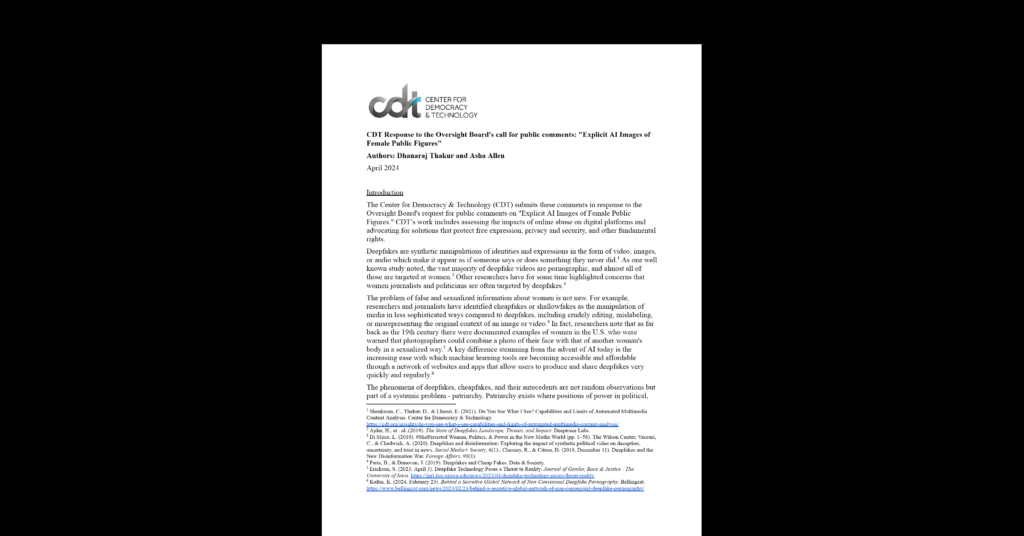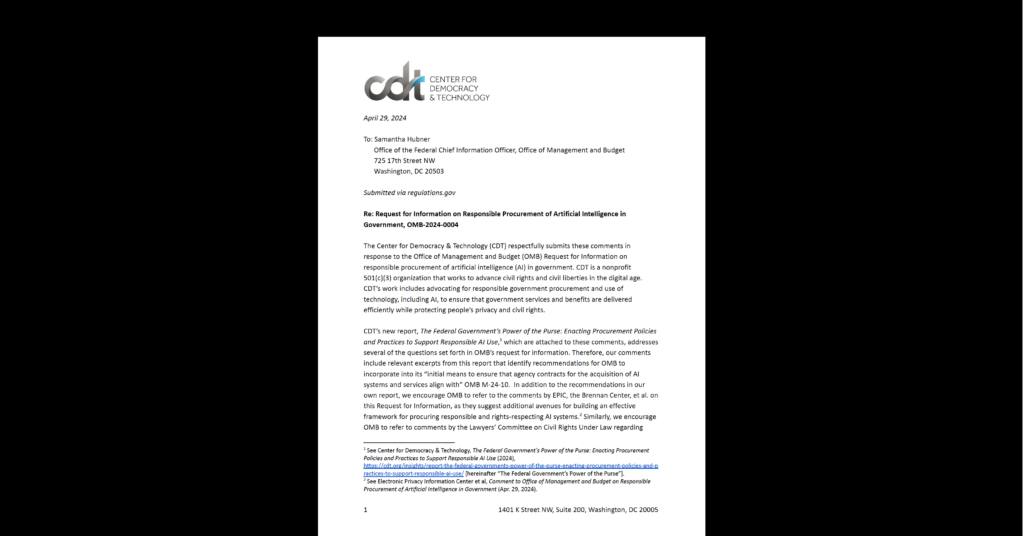Free Expression, Open Internet
Blurring the Lines in Music Copyright Will Hurt Artists and Online Hosts
For music copyright enthusiasts, the multimillion-dollar judgment issued in the “Blurred Lines” case was shocking, regardless of which side they take in the copyright debate. In the copyright infringement verdict against artists Robin Thicke and Pharrell Williams, a jury found the music duo guilty of copying the “total concept and feel: of Marvin Gaye’s 1977 hit song, “Got to Give It Up.” This holding creates the potentially dangerous notion that copyright extends past protectable elements such as melody to cover more ambiguous fields like “vibe,” “groove,” and “feel,” and could lead to significant repercussions in an era of takedowns.
After the Marvin Gaye estate sought compensation from Thicke and Williams for the apparent similarity and feel shared by “Blurred Lines” and “Got to Give It Up”: the duo preemptively sued the estate in the U.S. District Court for the Central District of California seeking a court declaration clearing them of liability. The heirs subsequently filed a counterclaim for copyright infringement.
In a copyright infringement claim, the work in question must have substantial similarity to the prior work (“Got to Give It Up”) to constitute improper appropriation. “Substantial” means substantial in degree as measured either qualitatively or quantitatively. Moreover, “similarity” means similar in the eyes of an ordinary person.
Artists Have Reason to Worry
Despite the best efforts of Thicke and Williams’ attorneys, the jury found that there was substantial similarity between the two works. A California jury concluded Thicke and Williams infringed on “Got to Give It Up” based on similar elements in both songs and the song’s overall feel, which was inferred from the “lead sheet” Gaye submitted to the U.S. Copyright Office. This was a novel finding because the jury expanded the notion of what elements of a song can be evaluated, such as direct melodic similarities, and declared that “Blurred Lines” infringed on the “genre” or overall style of Got to Give It Up.
This decision gives artists reasons to worry. First, the jury verdict essentially hamstrings the way in which new musicians can draw inspiration in the creation of new content. In some cases, the decision could extend copyright ability to the foundational building blocks in music structure, if these building blocks are deemed integral to the “vibe” of a particular song. The threat of punishment for the use of core musical structures will fundamentally inhibit creation and use of works that advance collective musical innovation. Moreover, limitations on innovation are contrary to copyright law’s constitutional mandate. They also conflict with the principle of fair use, which ensures that musicians are free to reference and pay homage to the work of prior musicians without threat of a potential lawsuit.
Before this case, creating a work with a “feel” or “vibe” similar to another work was not considered a violation of copyright law. Traditionally, the standard for infringement of musical compositions is much higher, demanding a perfect match-up of melody and rhythm.
Blurring the Lines for Digital Content
Second, the “Blurred Lines” decision could foster troublesome practices and repercussions for the creating and hosting of digital content. Allowing copyright holders to seek the removal of content based on ambiguous claims about “vibe,” “groove,” and “feel” will be detrimental to content creators and small online service providers alike.
The ambiguity of copyrightable “vibe” could also spur an increase in abusive takedown notices that burden users’ free expression online. It would be difficult for a rightsholder to assess whether an artist made a fair or infringing use of the rightsholder’s “groove.” Moreover, empowering rightsholders to demand takedowns based on abstract terms will introduce confusion, for both rightsholders and hosts, about what constitutes fair use.
Although fair use was not raised as a defense in this case, the jury’s decision could unwittingly shrink the scope of fair use. Out of the four factors considered in a fair use dispute, this case could have the most impact on one of them. When examining content under the first fair use factor, the purpose and character of use, the material taken from a prior work must be add new expression or meaning. Under a “Blurred Lines” analysis, it would not be sufficient for a musician to reference a prior work in the creation of new content. This is a dilemma for most of today’s musicians who draw creative inspiration and reference from past music icons. Although “Blurred Lines” was heavily influenced by Gaye’s work, it would be shortsighted to assume that Thicke and Williams’ song did not build on the original work by adding new aesthetics and insights.
Although “Blurred Lines” was heavily influenced by Gaye’s work, it would be shortsighted to assume that Thicke and Williams’ song did not build on the original work by adding new aesthetics and insights.
An additional impact of this case may especially affect smaller hosting services. If takedown notices are issued based on these broad terms, more content could be subject to removal. Moreover, these smaller services most likely lack the infrastructure and resources to verify the validity of takedown claims based on any ambiguous terms. This leaves small hosting services with two bleak options. They can either fight the claim in the wake of the “Blurred Lines” decision, or submit to the request and risk taking down a substantial amount of non-infringing content.
If nothing else, takedowns based on overly broad terms will undoubtedly result in a harmful chilling effect amongst the musical community. This high-profile case may alone be enough to discourage new musicians from entering the creative space and cause content hosts to yield to more abusive takedown requests.
This high-profile case may alone be enough to discourage new musicians from entering the creative space and cause content hosts to yield to more abusive takedown requests.
Thicke and Williams are now asking the Ninth Circuit Court of Appeal to overturn the verdict of the District Court in Los Angeles, or to grant them a new trial. They received amicus support from over 200 artists who emphasized how this judgement will eliminate “any meaningful standard for drawing the line between permissible inspiration and unlawful copying.” We join those artists and urge the Ninth Circuit to reverse the district court decision and restore some clarity to the line between copyright and fair use.


